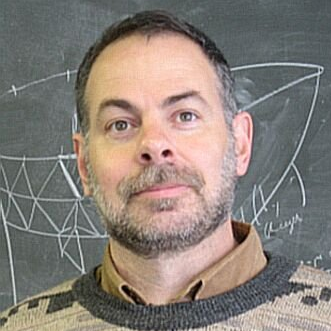Geometric and Topological Methods for Imaging, Graphics and Networks
A special issue of Mathematics (ISSN 2227-7390). This special issue belongs to the section "Mathematics and Computer Science".
Deadline for manuscript submissions: closed (30 September 2020) | Viewed by 9252
Special Issue Editors
Interests: discrete differential geometry and its applications; mathematical imaging and vision; complex networks; quasi-conformal mappings and applications; topology and its applications
Special Issues, Collections and Topics in MDPI journals
Interests: computer graphics; computer vision; visualization; geometric modelling; networking
Special Issues, Collections and Topics in MDPI journals
Special Issue Information
Dear Colleagues,
While computer science is generally not associated with geometry (and even less with topology), and practitioners in the field are, as a norm, far from being geometrically inclined, the fields of imaging and graphics stand apart. Indeed, not only are geometrical and topological methods widely used, and even prevalent, in these intensively active areas of study, they represent the main core of paradigms and tools employed. In fact, one might say—only slightly exaggerating—that large tracts of imaging and practically all of the research in graphics represents nothing else but the direct application and concrete “crystallization” of many important ideas and techniques in geometry and topology.
Mindful of this essential fact, we invite our colleagues labouring in the disciplines of imaging and graphics to submit papers illustrating the multifaceted roles of geometry and topology in the present state-of-the-art research. In particular, papers are welcomed appertaining to all areas of geometry, being it differential, projective or algebraic, smooth, discrete, or digital, as well as their manifold applications to segmentation, feature extraction, texture modelling, classification, face recognition, manifold learning, and many others. In particular, articles emphasizing the role and usefulness of the notion of curvature in all its manifold incarnations are invited. Contributions involving topological tools and applications for graphics and imaging applications, involving the study of surfaces and of higher-dimensional manifolds and more generalized structures are also appreciated.
Prof. Dr. Emil Saucan
Prof. Dr. David Gu
Guest Editors
Manuscript Submission Information
Manuscripts should be submitted online at www.mdpi.com by registering and logging in to this website. Once you are registered, click here to go to the submission form. Manuscripts can be submitted until the deadline. All submissions that pass pre-check are peer-reviewed. Accepted papers will be published continuously in the journal (as soon as accepted) and will be listed together on the special issue website. Research articles, review articles as well as short communications are invited. For planned papers, a title and short abstract (about 100 words) can be sent to the Editorial Office for announcement on this website.
Submitted manuscripts should not have been published previously, nor be under consideration for publication elsewhere (except conference proceedings papers). All manuscripts are thoroughly refereed through a single-blind peer-review process. A guide for authors and other relevant information for submission of manuscripts is available on the Instructions for Authors page. Mathematics is an international peer-reviewed open access semimonthly journal published by MDPI.
Please visit the Instructions for Authors page before submitting a manuscript. The Article Processing Charge (APC) for publication in this open access journal is 2600 CHF (Swiss Francs). Submitted papers should be well formatted and use good English. Authors may use MDPI's English editing service prior to publication or during author revisions.
Keywords
- geometry
- topology
- imaging
- graphics
- geometric flows
- registration
- feature extraction
- image classification
- texture modelling
- segmentation
- manifold learning






